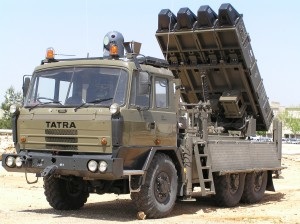
ATS – November 27, 2012 – By Kevin Hattori
As the recent conflict in Israel and Gaza escalated, more and more news reports included mentions of “Iron Dome,” the defensive anti-missile system that saved countless lives on both sides. Developed largely by a team of Technion-Israel Institute of Technology graduates employed by Rafael Advanced Defense Systems, the system intercepted and destroyed more than 420 missiles headed toward Israel, with a success rate of 90 percent.
Such a system was first conceived of in 2004, when the Israel Ministry of Defense issued a call for proposals for a system to intercept short-range rockets. A team of experts in the Ministry’s R&D Agency (MAFAT) assessed a total of 24 proposals, and Rafael Advanced Defense Systems’ Iron Dome, capable of operating in all weather conditions, was selected as the most suitable.
Technion graduates made up a large majority of the Iron Dome development team, which should come as little surprise since 80 percent of the engineers at Rafael are Technion alumni. The system was developed in a 30-month time frame, and at a cost of just 1/8 that of the system that preceded it.
“We couldn’t have done it without Technion graduates,” said Rafael CEO Yedidya Ya’ari in a 2010 interview.
Iron Dome works by identifying aerial threats (mainly rockets) and eliminating them autonomously (i.e. without outside controls). It then uses a sensor to locate the threat, and a command and control center to analyze the rocket’s trajectory and its damage potential. If that center determines that a missile has damage potential, a missile is fired to eliminate that threat. If the missile is determined to NOT have potential for damage, it is ignored.
Iron Dome can detect and intercept rockets and artillery shells headed for population centers within a 43.4-mile (70 kilometer) range, with a success rate between 80 and 90 percent. This is especially amazing when considering that the incoming missiles are often comprised of makeshift components, giving them “wobbly” trajectories.
One engineer who played a key role in the Iron Dome’s development likened these incoming missiles as “…coke bottle(s) flying several times faster than the speed of sound on an irregular course. Intercepting (them) seems far fetched.”

